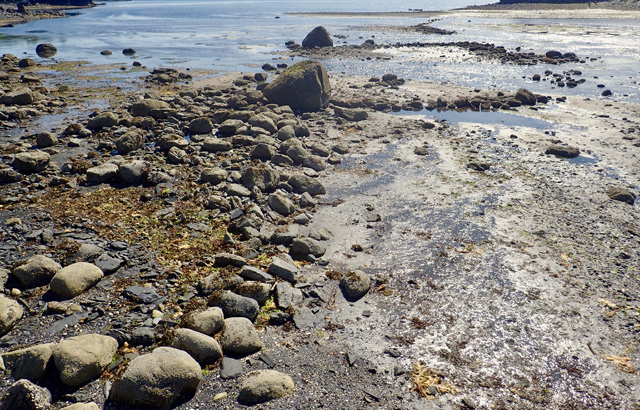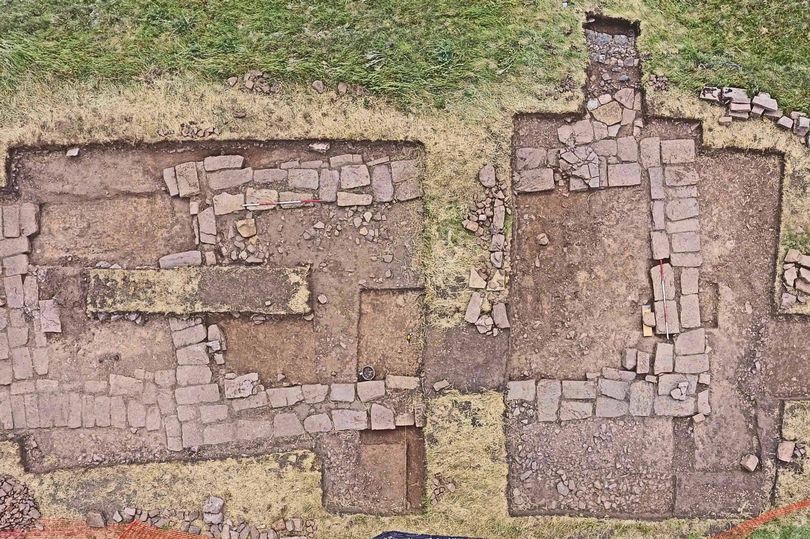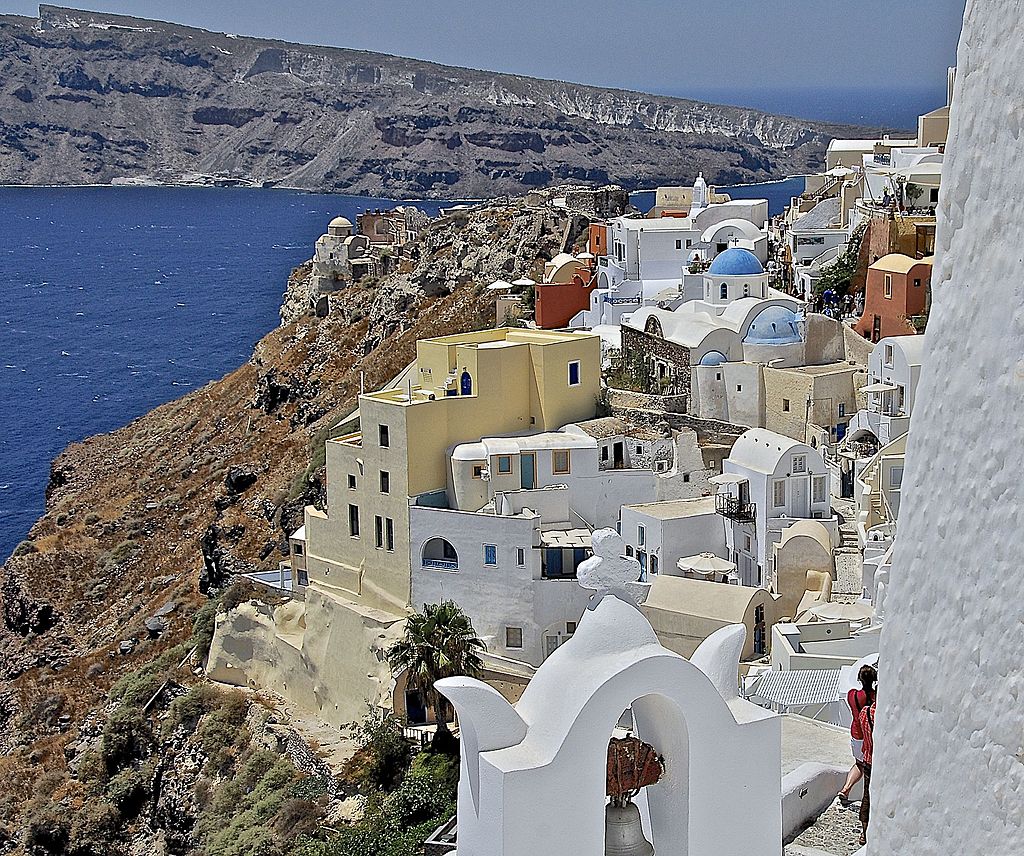Executive Summary
During the April reporting period, anti-ISIL operations continued around the group’s two remaining urban strongholds of Raqqa and Mosul. Near Raqqa, US-backed Syrian Democratic Forces (SDF) continued to encircle Raqqa to prepare for the city’s recapture. US-led Coalition aerial bombardment increased over surrounding towns and villages, as well as over Raqqa itself. Raqqa contains many significant cultural heritage sites, most notably the archaeological mounds of Tell Bi’a and Tell Zeidan, the Raqqa Museum, and standing architecture of the Abbasid Caliphate. Most of Raqqa’s heritage sites have suffered severe damage during the conflict, largely as a result of ISIL intentional destructions, military repurposing, and looting. The SDF pressed into the strategic ISIL-held city of Tabqa (al-Thawrah) recapturing several neighborhoods. The area is significant for its nearby hydroelectric dam (Tabqa Dam), forming the impound lake (Lake Assad) on the Euphrates — an area rich in archaeological sites. ISIL consolidated territory in Deir ez-Zor Governorate, where US-backed Syrian opposition forces and pro-regime forces prepared for a new offensive. At least two heritage sites in ISIL-held Syria were damaged or destroyed during the reporting period.
SARG forces continue to advance against opposition-held territory in Rif Dimashq Governorate, where Russian and SARG aerial bombardment was continuous. Evacuation of opposition forces, pro-regime forces, and civilians between four towns in Rif Dimashq and Idlib Governorates was completed despite several delays. Aerial bombardment over major opposition-held areas in Syria continued with almost daily instances of SARG and Russian airstrikes and barrel bombings. At least 15 cultural sites in opposition-held areas were damaged or destroyed as a result.
In Mosul, Iraqi Security Forces (ISF) continued to advance into the final remaining ISIL-held neighborhoods. Clearing operations continued in recently recaptured neighborhoods, paving the way for displaced Mosul residents to return despite poor infrastructure. ISIL militants still held the historically significant Old City, site of al-Nuri al-Kabir Mosque, where ISIL leader Abu Bakr al-Baghdadi declared the creation of his “caliphate” in 2014. South of Mosul, Shia Iraqi forces of the Popular Mobilization Front (PMF) recaptured the ancient site of Hatra from ISIL. Footage from the recaptured area shows Hatra to be less damaged than some observers had anticipated based on propaganda videos shared by ISIL showing acts of intentional destruction. Portions of the ancient city appear to have been militarized for the militant’s use.
Key Points
- New reporting reveals scope of damage to Omar Ibn al-Khattab Mosque in al-Jeineh, Aleppo Governorate. ASOR CHI Incident Report SHI 17-0038 UPDATE
- Reported Russian airstrikes damage an Ottoman-era hammam (bathhouse) in Sarmin, Idlib Governorate. ASOR CHI Incident Report SHI 17-0072
- New video footage provides more information on ISIL looting of the ancient site of Nineveh. ASOR CHI Incident Report IHI 15-0097 UPDATE
- Popular Mobilization Front (PMF) captures the ancient site of Hatra from ISIL. ASOR CHI Incident Report IHI 17-0024
- New photographs show the dismantling of a historic house in the Old City of Derna in Libya. ASOR CHI Incident Report LHI 17-0001
Syria
In Syria’s Idlib Governorate, aerial bombardment was seemingly intensified following an April 4 chemical weapons attack that killed at least 90 people in the town of Khan Sheikhoun. ASOR CHI recorded damage to four mosques, an Ottoman-era Hammam (bathhouse), and a Roman-era bridge across Idlib Governorate as a result of the ongoing SARG and Russian bombardment (see SHI 17-0066, SHI 17-0067, SHI 17-0068, SHI 17-0069, SHI 17-0070, SHI 17-0071, and SHI 17-0072 in Appendix pp. 59–76). Civilian casualties were reported in at least one of the strikes.
Syrian opposition forces, including factions of Islamist opposition forces, continue to hold territory in Rif Dimashq Governorate and have come under increasing aerial bombardment by the Syrian regime and Russian forces. ASOR CHI recorded damage to three mosques, including one mosque dated to the 11th Century CE, in opposition-held areas (see SHI 17-0055, SHI 17-0056, and SHI 17-0057 in Appendix pp. 29–38). All three of the mosques reportedly took direct fire in the forms of missiles and shells. At least two of the mosques had previously been damaged during the conflict.
As US-backed Syrian Democratic Forces advanced toward the ISIL-held stronghold of Raqqa, US-led Coalition airstrikes increased over neighboring towns and villages. Local reporting groups documented an increase in damage to cultural sites, including a mosque and a cultural center in Raqqa Governorate (see SHI 17-0064 and SHI 17-0065 in Appendix pp. 56–58). ISIL has often attempted to use such incidents for its anti-Coalition rhetoric and propaganda.
In addition, a March 2017 US-led Coalition airstrike that destroyed a mosque in Aleppo Governorate remains under investigation. Two new reports by Human Rights Watch and Forensic Architecture detail the extent of damage, and raise concerns regarding the accuracy of the information that led to the airstrike, reportedly authorized to target al-Qaeda affiliates in Syria (see SHI 17-0038 UPDATE in Appendix pp. 9–13).
Reduced combat kinetics in Aleppo has provided activists and others with opportunities to visit long-neglected heritage sites and initiate emergency response projects. ASOR CHI noted three cleanup and reconstruction efforts in the Old City of Aleppo (see SHI 17-0050, SHI 17-0051, SHI 17-0052 in Appendix p. 18–24). Often local residents (some with guidance from Syrian experts) have spearheaded these projects. These site visits and preservation efforts are uncovering new evidence of conflict-related cultural heritage incidents, such as thefts, that occurred during armed conflict between the Syrian regime and opposition forces in the Old City.
Other cleanup and reconstruction efforts are underway in al-Bab City, where at least four mosques were heavily damaged by clashes between ISIL and Turkish-backed Syrian opposition forces (see SHI 17-0058, SHI 17-0059, SHI 17-0060, in Appendix p. 39–47). According to interviews with local residents, including a local imam, militants co-opted one of the mosques for use as an ISIL headquarters with the basement serving as a makeshift prison. Another mosque, now significantly damaged and undergoing cleanup efforts, was featured in an earlier ISIL recruitment video. DigitalGlobe satellite imagery shows additional detail of damage to mosques in al-Bab, likely as a result of US-led Coalition and Turkish airstrikes.
Iraq
With the advance of Iraqi Security Forces in Mosul, the extent of damage wrought by ISIL is becoming clearer. Recent video footage details the construction of a road through the ancient site of Nineveh, allegedly built and used by ISIL militants to facilitate the looting and selling of antiquities (see IHI 15-0097 UPDATE in Appendix p. 86–89). Local residents recall ISIL using the road to traffic out antiquities, threatening local Mosul residents with amputations if they attempted to enter the site. Although Nineveh is now under the control of Iraqi Security Forces, ASOR CHI remains concerned as to the security of the ancient site of Nineveh as it is unclear what measures, if any, have been taken to reduce the risk of continuing looting or vandalism.
ISIL militants in Mosul continue to target Iraqi civilians as they attempt to escape from areas of the city that remain under the group’s control. ISIL militants have reportedly stationed themselves inside civilian sites ranging from mosques to residential buildings in order to maximize civilian casualties in the event of an airstrike by the US-led Coalition. The Old City of Mosul will be a major flashpoint in the upcoming battles for control of ISIL-held neighborhoods. ASOR CHI remains extremely concerned for the fate of civilians and the cultural heritage sites that are densely packed in this neighborhood, including al-Nuri al-Kabir Mosque, where ISIL leader Abu Bakr al-Baghdadi announced the creation of his ‘caliphate’ in 2014. The mosque has already sustained heavy damage to the dome (see IHI 17-0023 in Appendix p. 98–99).
On April 26, 2017 the Popular Mobilization Front (PMF) captured the ancient site of Hatra from ISIL (see IHI 17-0024 in Appendix p. 100–120). New photographs and video footage showed less damage to the site than previously feared. The site appears to have been used by the group for military training; items such as a climbing rope and a shooting range are apparent in several recent photographs of the site. ASOR CHI remains concerned as to the security of the ancient site of Hatra given its remote desert location. Following the recapture of the site, the current security situation remains unclear, and we are currently unable to verify whether Iraqi officials have implemented security measures to protect the site from further damage or looting. Other ancient sites in Iraq, including the recently recaptured site of Nimrud, lack security and remain vulnerable to looting and vandalism.
Across the Nineveh Plains, local residents from majority-Christian and Yezidi towns and villages have participated in cleanup and reconstruction efforts. Infrastructure in the area remains poor, with limited access to clean water and electricity, limiting the ability of displaced residents to return. Easter masses were celebrated in at least one village, despite the poor conditions of the churches in the area. New information is also arising as to how ISIL used the churches and other religious sites in the Nineveh villages and towns. Many churches and monasteries were used as weapons caches, military training sites, and bed-down sites. The same sites were destroyed as Peshmerga and Iraqi Christian militias advanced against ISIL. Cemeteries of all faiths were also targeted for vandalism and looting (see IHI 16-0042 Update in Appendix p. 90–94).
Libya
In Libya, heavy clashes occurred between the Operations Room of the Government of National Accord (GNA) and the Libyan National Army (LNA) forces commanded by Khalifa Haftar around the Tamanhint Airbase outside of the southern city of Sebha. LNA airstrikes targeted Dernah and several neighborhoods in Benghazi. This ongoing violence does not appear to have damaged cultural heritage sites. Generally, violent skirmishes decreased, allowing the Turkish Embassy to reopen its consular affairs section in Tripoli and oil production to resume in Libya’s largest oil field, al Sharara. In Dernah, which celebrated one year of liberation from ISIL forces this month, a period of relative stability has allowed for redevelopment efforts to occur. These efforts, unfortunately, have encroached on key cultural heritage sites. ASOR CHI has documented one Ottoman-era house that is in the process of being dismantled (see LHI 17-0001 in Appendix p. 121–123). ASOR CHI remains concerned as to this trend, especially as it relates to standing cultural heritage sites as well as development encroachment over unexcavated archaeological sites. ASOR CHI will be expanding its coverage of Libya in the coming months with a focus on risk to cultural heritage sites.
 KODIAK ISLAND, ALASKA—A prehistoric stone fish trap has been found on northern Kodiak Island, reports
KODIAK ISLAND, ALASKA—A prehistoric stone fish trap has been found on northern Kodiak Island, reports 
 BOLOGNA, ITALY—A study of populations from around the Mediterranean that combines ancient DNA (aDNA) and genomic analysis of modern people evidences a divison between Greeks hailing from the country's mainland and those from its islands. According to a report in
BOLOGNA, ITALY—A study of populations from around the Mediterranean that combines ancient DNA (aDNA) and genomic analysis of modern people evidences a divison between Greeks hailing from the country's mainland and those from its islands. According to a report in 

 Surviving parchment fragment of the Black Sea ‘Shield Map’ from Dura Europos dated to before 260 CE. It depicts staging posts along the Black Sea (Bibliotheque Nationale Gr. Suppl. 1354, no. 5). Images via Cumont (see citation below) with added scale and color enhancement.
Surviving parchment fragment of the Black Sea ‘Shield Map’ from Dura Europos dated to before 260 CE. It depicts staging posts along the Black Sea (Bibliotheque Nationale Gr. Suppl. 1354, no. 5). Images via Cumont (see citation below) with added scale and color enhancement. 















 DUBLIN, IRELAND—Archaeologists have used the remarkably well-preserved skull of a young Dubliner, who died during the Tudor period (1485-1603), to reconstruct the man's face using 3-D digital technology.
DUBLIN, IRELAND—Archaeologists have used the remarkably well-preserved skull of a young Dubliner, who died during the Tudor period (1485-1603), to reconstruct the man's face using 3-D digital technology. 








